Hearing protection :
Hearing Conservation and Hearing Protection is achieved through preventative measures. To reduce occupational hearing loss, all employees, who work in potentially noisy areas, are provided hearing protection, training and annual hearing tests. OSHA hearing conservation standard is covered in 29 CFR 1910.95. Engineering controls are applied to reduce noise from equipment and operations.
After engineering controls are evaluated for effectiveness or feasibility, administrative controls should be considered to reduce noise exposure. Administrative controls include restricting exposure time or using personal protective equipment.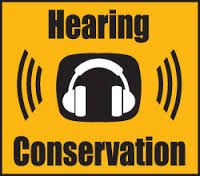
Personal Protective Equipment, such as ear plugs or muffs, may be used to reduce the amount of noise exposure. Each plug or muff has a noise reductions factor (NR) as evaluated by ANSI Standards (S3.19 - 1974 or Z24.22 - 1957). For example, if a work area has an ambient noise exposure of 96 dB(A), the hearing protectors should be rated 6 NR or better to be effective.
According to OSHA Regulations, each location with noise exposures of 85 to 89 dB(A) will provide hearing protectors for the Employee's optional use. Noise exposures at 90 dB(A) or above require the mandatory use of hearing protection. Further, OSHA requires that a variety of hearing protectors be available for Employees to choose (both a variety of plug and muff type hearing protectors).
Types of Hearing Protection:
Hearing protection devices are the first line of defense against noise in environments where engineering controls have not reduced employee exposure to safe levels. Hearing protective devices can prevent significant hearing loss, but only if they are used properly.
The most popular hearing protection devices are earplugs which are inserted into the ear canal to provide a seal against the canal walls. Earmuffs enclose the entire external ears inside rigid cups. The inside of the muff cup is lined with acoustic foam and the perimeter of the cup is fitted with a cushion that seals against the head around the ear by the force of the headband.
Engineering Controls:
After it is determined that noise exposure above 85 dB(A) are present, engineering controls should be evaluated and implemented to reduce the noise exposure before administrative controls are initiated. Some examples of engineering controls include:
1. Noise reducing baffles
2. Compartmentalization
3. Installing noise reducing gears
4. Installing rubber pads under machinery
When new equipment or machinery are evaluated for purchase, the Safety Manager should be consulted to conduct an evaluation from a safety and health standpoint. One criteria of the evaluation should include the amount of noise the equipment will produce and how it will effect the overall noise exposure.
Administrative Controls:
After engineering controls are evaluated for effectiveness or feasibility, administrative controls should be considered to reduce noise exposure. Administrative controls include restricting exposure time or using personal protective equipment (PPE).
Personal Protective Equipment, such as ear plugs or muffs, may be used to reduce the amount of noise exposure. Each plug or muff has a noise reductions factor (NR) as evaluated by ANSI Standards (S3.19 - 1974 or Z24.22 - 1957). For example, if a work area has an ambient noise exposure of 96 dB(A), the hearing protectors should be rated 6 NR or better to be effective.
According to OSHA Regulations, each location with noise exposures of 85 to 89 dB(A) will provide hearing protectors for the Employee's optional use. Noise exposures at 90 dB(A) or above require the mandatory use of hearing protection. Further, OSHA requires that a variety of hearing protectors be available for Employees to choose (both a variety of plug and muff type hearing protectors).
Types of Hearing Protectors Hearing protection devices are the first line of defense against noise in environments where engineering controls have not reduced employee exposure to safe levels. Hearing protective devices can prevent significant hearing loss, but only if they are used properly. The most popular hearing protection devices are earplugs which are inserted into the ear canal to provide a seal against the canal walls. Earmuffs enclose the entire external ears inside rigid cups.
Hearing Protection Fact Sheet:
Hearing loss from exposure to high noise levels is generally permanent. When employees are subjected to sound exceeding those listed in the table below feasible administrative or engineering controls must be used to reduce exposure. If these controls fail to reduce sound levels to acceptable levels, personal hearing protective equipment must be provided to reduce sound levels within the levels of the table.
Permissible Noise Exposure
Noises are considered continuous if the interval between occurrences of the maximum noise level is 1 second or less. Noises not meeting this definition are considered impact or impulse noises. Exposure to impact or impulse noises (loud momentary explosions of sound) must not exceed 140 dB. Examples of impact or impulse noises may include the noise from a powder-actuated nail gun, the noise from a punch press, or the noise from drop hammers.
Noise Hazards: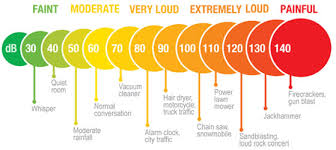
It's not just hearing loss. Studies have shown that where consistent exposure to 95 decibels occurs, there exists a serious threat to the cardiovascular system, more specifically an elevation in systolic blood pressure (hypertension), digestive, respiratory, allergenic and musculus-skeletal disorders, as well as disorientation and reduction of eye focus, potentially leading to the increase of accidents and injuries. The negative effects associated with long term hearing loss include decreased ability or inability to communicate, irritability, tinnitus (ringing in the ears), and frustration with personal/familial relationships.
Action Level:
Employers must administer a continuing, effective hearing conservation program whenever employee noise exposures equal or exceed an 8-hour time-weighted average sound level (TWA) of 85 decibels. Additionally, as part of the programs, employers must establish and maintain an audio metric testing program by making audio metric testing available to all employees whose exposures equal or exceed an 8-hour time-weighted average of 85 decibels
Personal Protective Equipment
Single-use earplugs. Made of waxed cotton, foam, or fiberglass wool, these ear plugs are self-forming and, when properly inserted, work as well as most molded earplugs.
Preformed or molded earplugs. These plugs must be individually fitted by a professional. Non disposable plugs should be cleaned after each use.
Band Type Hearing Protectors come on a flexible plastic band that is worn under the chin while the protectors are in the ears. The band can be left resting around the neck while the protectors are not in use. They are designed for convenience in work areas with varying noise levels.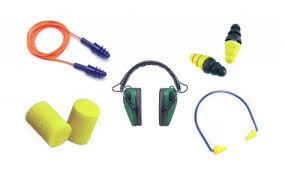
Ear Canal Caps seal the opening to the ear without entering the ear canal. Similar to band-type hearing protectors, they usually come on a band that can be placed around the neck when the caps are not in use for convenience in work areas with varying noise levels.
Earmuffs. Earmuffs require a perfect seal around the ear. Glasses, long sideburns, long hair, and facial movements such as chewing may reduce the protective value of earmuffs. Some special earmuffs are designed for use with eyeglasses or beards.
Active Noise Canceling Headsets use an electronic system to cancel unwanted background noise while at the same time enhancing the quality of audio delivered through the headset. They are used primarily for in-flight noise reduction.
Communication Head Sets block unwanted noise while at the same time allowing the wearer to communicate clearly with co-workers. Special microphones suppress environmental noise to aid in two-way communications.
Work Area Safety Check: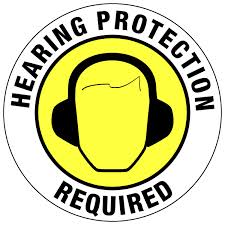
- Insulate noisy equipment.
- Post high noise area signs.
- Limit pass through traffic in high noise areas.
- Conduct noise surveys when new equipment is added.
- Keep extra hearing protectors available in the workplace.
Pre-Use Safety Check:
- Ensure hearing protection is clean• Check Muff Sealing surfaces for cracks or tears
Operation Safety:
- Use hearing protection in areas greater than 85 decibels.
- Use hearing protection when using power saws, impact tools, etc.
- Replace worn or broken hearing protectors immediately.
- Ensure visitors are provided hearing protection.
- Use hearing protection off the job when shooting, using power tools, etc.
Engineering Controls: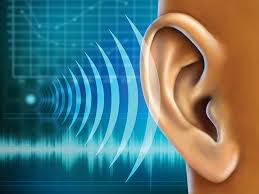
- Insulate or isolate noisy machines or operations.
- Proper maintenance & adjustment of equipment.
- Selection of effective hearing protectors
Administrative Controls:
- worker training.
- restricted access to high noise areas.
- rotate workers into & out of high noise areas.
- relocate workers with hearing loss.
- annual screening & evaluation of employees.
Symptoms of Hearing Loss:
- Ringing in ears.
- Difficulty hearing normal conversations.
- Noises are "fuzzy" or muffled.
Instruments are used for measuring noise:
The most common instruments used for measuring noise are the sound level meter (SLM), the integrating sound level meter (ISLM), and the noise dosimeter. It is important that you understand the calibration, operation and reading the instrument you use. The user's manual provided by the instrument manufacturer provides most of this information. Table 1 provides some instrument selection guidelines.
Sound level meter (SLM):
The SLM consists of a microphone, electronic circuits and a readout display. The microphone detects the small air pressure variations associated with sound and changes them into electrical signals. These signals are then processed by the electronic circuitry of the instrument. The readout displays the sound level in decibels. The SLM takes the sound pressure level at one instant in a particular location.
To take measurements, the SLM is held at arm's length at the ear height for those exposed to the noise. With most SLMs it does not matter exactly how the microphone is pointed at the noise source. The instrument's instruction manual explains how to hold the microphone. The SLM must be calibrated before and after each use. The manual also gives the calibration procedure.
With most SLMs, the readings can be taken on either SLOW or FAST response. The response rate is the time period over which the instrument averages the sound level before displaying it on the readout. Workplace noise level measurements should be taken on SLOW response.
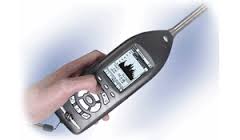 A Type 2 SLM is sufficiently accurate for industrial field evaluations. The more accurate and much more expensive Type 1 SLMs are primarily used in engineering, laboratory and research work. Any SLM that is less accurate than a Type 2 should not be used for workplace noise measurement.
A Type 2 SLM is sufficiently accurate for industrial field evaluations. The more accurate and much more expensive Type 1 SLMs are primarily used in engineering, laboratory and research work. Any SLM that is less accurate than a Type 2 should not be used for workplace noise measurement.
An A-weighting filter is generally built into all SLMs and can be switched ON or OFF. Some Type 2 SLMs provide measurements only in dB(A), meaning that the A-weighting filter is ON permanently (see the OSH Answers on Noise - Basic Information for more about A-weighted decibels dB(A)).
A standard SLM takes only instantaneous noise measurements. This is sufficient in workplaces with continuous noise levels. But in workplaces with impulse, intermittent or variable noise levels, the SLM makes it difficult to determine a person's average exposure to noise over a work shift. One solution in such workplaces is a noise dosimeter.
Integrating sound level meter (ISLM):
The integrating sound level meter (ISLM) is similar to the dosimeter. It determines equivalent sound levels over a measurement period. The major difference is that an ISLM does not provide personal exposures because it is hand-held like the SLM, and not worn.
The ISLM determines equivalent sound levels at a particular location. It yields a single reading of a given noise, even if the actual sound level of the noise changes continually. It uses a pre-programmed exchange rate, with a time constant that is equivalent to the SLOW setting on the SLM.
Noise affect performance: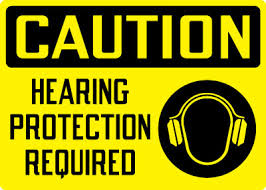
Noise can interfere with verbal communications and can be distracting and annoying. Below are some examples of how these factors can affect work performance.
Speech intelligibility:
Speech intelligibility is the ability to understand spoken words. The presence of noise interferes with the understanding of what other people say. This includes face-to-face talks, telephone conversations, and speech over a public address system.
In order to be intelligible the sound level of speech must be greater than the background noise at the ear of the listener. People with otherwise unnoticeable hearing loss find it difficult to understand spoken words in noisy surroundings.
In noisy work situations, people are able to converse with difficulty at a distance of one meter for a short time in the presence of noise as high as 78 dB(A). For prolonged conversations, the background noise level must be lower than 78 dB(A).
In social situations people often talk at distances of 2 to 4 meters. In such cases noise level should not exceed 55 to 60 dB(A).
Click the below link to download the more details about Hearing protection

Hearing Protection - Safety Check sheet
Hearing Protection - OSHA Fact Sheet
Hearing Conservation - Tool Box Talks
Hearing Protection residential construction - Tool Box Talks